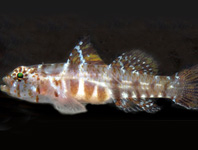Abstract
Geranomyia kunashir n. sp. from Kunashir Island (Far East of Russia), Geranomyia piagola n. sp. and Geranomyia semjina n. sp. from South Korea are described. Keys for all species of Korean Geranomyia are presented.
References
Alexander, C.P. (1921) New species of Japanese crane-flies. Part II. (Diptera, Tipulidae). Insecutor Inscitiae Menstruus, 9, 179–186.
Alexander, C.P. (1922) New species of Japanese crane-flies. Part III. (Diptera, Tipulidae). Insecutor Inscitiae Menstruus, 10, 177–188.
Alexander, C.P. (1938) New or little-known Tipulidae from eastern Asia (Diptera). XL. Philippine Journal of Science, 67, 129–166.
Alexander, C.P. (1940) New or little-known Tipulidae from eastern Asia (Diptera). XLII. Philippine Journal of Science, 71, 169–204.
Alexander, C.P. (1972) Diptera: Tipulidae. Insects of Micronesia, 12, 733–863.
Haliday, A.H. (1833) Catalogue of the Diptera occurring about Holywood in Downshire. Entomological Magazine, 1, 147–180.
Hancock, E.G. (2011) Order Diptera, family Limoniidae. Arthropod Fauna of the UAE, 4, 684– 695.
McAlpine, J.F. (1981) Morphology and terminology adults. In: McAlpine, J.F. (Coordinators), Manual of Nearctic Diptera. Research Branch, Agriculture Canada, Monograph, 27 (1), pp. 9– 63.
Oosterbroek, P. (2016) Catalogue of the Craneflies of the World (CCW). Online version. Available from: http://nlbif.eti.uva.nl/ccw/index.php (accessed 11 May 2016)
Podenas, S., Byun, H.-W. & Kim, S.-K. (2015) Limoniinae crane flies (Diptera: Limoniidae) new to Korea. Journal of Species Research, 4 (2), 61–96.
http://dx.doi.org/10.12651/JSR.2015.4.2.061

